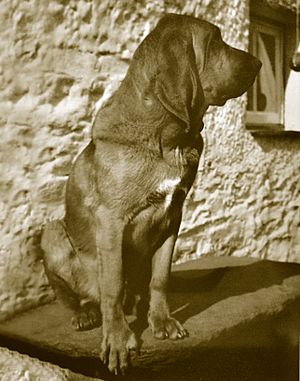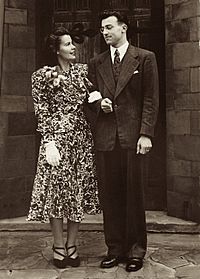Eville Gorham facts for kids
Quick facts for kids
Eville Gorham
|
|
|---|---|

Gorham in 1984
|
|
| Born | 15 October 1925 Halifax, Nova Scotia, Canada
|
| Died | 14 January 2020 (aged 94) Minneapolis, Minnesota, United States
|
| Citizenship | Canadian, American |
| Alma mater | Dalhousie University University College London |
| Known for | Studies of acid rain, peatlands, radioactive fallout |
| Awards | Regents' Medal, University of Minnesota Benjamin Franklin Medal G. Evelyn Hutchinson Award Lifetime achievement award, Society of Wetland Scientists Member of the National Academy of Sciences Fellow of the Ecological Society of America Fellow of the American Academy of Arts and Sciences |
| Scientific career | |
| Fields | Ecology, Limnology, Biogeochemistry |
| Institutions | University College, London (lecturer) Freshwater Biology Association, United Kingdom (Senior Scientific Officer) University of Toronto (Assistant Professor) University of Calgary (Professor, Department of Biology) University of Minnesota (Regents' Professor, Department of Ecology) |
| Doctoral advisor | W. H. Pearsall |
Eville Gorham FRSC (October 15, 1925 — January 14, 2020) was a brilliant Canadian-American scientist. He spent his life studying the chemistry of fresh water and the special environments called peatlands. Peatlands are like giant sponges made of decaying plants.
Gorham made many important discoveries. For example, he found out how acid rain makes lakes more acidic. He also showed how radioactive materials from nuclear tests could build up in northern food chains. This process is called biological magnification.
His work on acid rain helped lead to new laws. These laws changed how power plants operate, making them cleaner. His findings on radioactive fallout also helped create a treaty. This treaty stopped nuclear weapons testing in the atmosphere.
Gorham believed that scientific discoveries often happen by chance. He encouraged his students to always look for unexpected opportunities. He was known as a "renaissance scholar" for his wide range of knowledge. He inspired many other scientists.
Life and Discoveries
Eville Gorham grew up in Halifax, Nova Scotia, Canada. He loved to read and learn. He went to Dalhousie University from 1942 to 1947. There, he earned degrees in biology and zoology. For his master's degree, he studied how temperature affects salmon eggs. This work later became important for understanding thermal pollution.
Gorham decided he didn't want to do experiments that harmed animals. In 1947, he received a special scholarship. He then went to University College London in England for his PhD. He studied how minerals are found in plants. This led him to become interested in how ecosystems become acidic.
After his PhD, Gorham spent a year in Sweden. He studied the waters of a Swedish peatland. When he returned to England, he worked at University College, London. Later, he joined the Freshwater Biological Association. This is where he made some of his most important discoveries. These included his work on acid rain and nuclear fallout.
Gorham's discoveries about radioactive fallout started with a lucky chance. He liked a bloodhound that belonged to a local medical officer, Frank Madge. Madge was worried about radiation after a fire at the Windscale plutonium plant. He asked Gorham to help him investigate.
Gorham used his lab's Geiger counter to check for radiation. He found a lot of radiation in sphagnum moss near the Windscale plant. But he found just as much radiation in moss far away. This meant the radiation was not from the fire. It was from global radioactive fallout. Gorham wrote about his findings, and his paper was published in Nature.
He kept testing plants and found that lichens were also very radioactive. He read that Norwegian reindeer, which eat lichen, had high levels of radioactive elements. Gorham then published an article. It showed how radioactive fallout built up in northern ecosystems. This was called bioaccumulation.
This information was very important. It helped people understand that human actions could affect the whole world. Even people far away from the problem could be impacted. This understanding helped lead to the Partial Nuclear Test Ban Treaty in 1963. This treaty stopped nuclear testing in the atmosphere.
Gorham's work on radioactivity was a side project. His main focus was studying the chemistry of rain, bogs, and lakes. He proved that bog waters are mostly made of rainwater. He also found that the rain's contents were not just local. Rain from industrial areas was diluted sulfuric acid. Rain from the coast brought sea salt. This was the start of his second important side project. It showed the far-reaching effects of air pollution.
Gorham also looked at how air pollution affected people. He found links between lung diseases and different air pollutants. For example, bronchitis was common in cities with high levels of hydrochloric acid. Pneumonia was linked to sulfur in the rain. Lung cancer was connected to tar from industrial plants. He published these findings in medical journals like The Lancet.
After his father passed away, Gorham and his family moved back to Canada. He worked at the University of Toronto. There, he studied how pollution from smelters affected forests and lakes. In 1962, he moved to the University of Minnesota. Here, Gorham became an environmental activist. He taught courses on how pollution affects ecosystems.
Gorham served on many environmental committees. He worked on projects with the Royal Society of Canada and the U.S. National Academy of Sciences. He studied peatlands and research trends in ecology and limnology.
Gorham had a diverse teaching career. He taught basic botany and biology. Later, he taught about lakes (limnology) and how pollutants affect ecosystems. He also taught courses at field stations, like Itasca State Park in Minnesota.
Personal Life
Eville met his future wife, Ada Macleod, in 1945. They met while he was studying at Dalhousie University. They got married in 1948 in England. They lived happily in London for several years. Life in London was exciting, and they enjoyed plays, ballets, and museums.
A notable event during their time in London was the Great London Smog of 1952. This smog lasted for four days. It caused the deaths of thousands of people, especially the very old and very young.
In 1950, Eville and Ada lived in Sweden for a year. Eville worked on a peatland near Lake Malaren. He sometimes even skated to work!
After returning to England, Eville worked in the Lake District. He and Ada lived in a small stone cottage. It rained a lot there, sometimes six feet in a year! Their daughter, Kerstin, was born in 1957.
When Eville's father died in 1957, the family moved back to Canada. Eville took a job at the University of Toronto. They had two more daughters, Vivien (born 1958) and Jocelyn (born 1960). Eville wasn't happy with his job there. So, he found a new position at the University of Minnesota.
Minnesota was a great place for them. It had many different ecosystems, like forests, prairies, and lakes. The university also encouraged teamwork among different departments. Their son, Jamie, was born in 1964. Eville and Ada stayed in Minnesota for the rest of his career.
Eville Gorham passed away on January 14, 2020.
Images for kids






